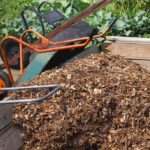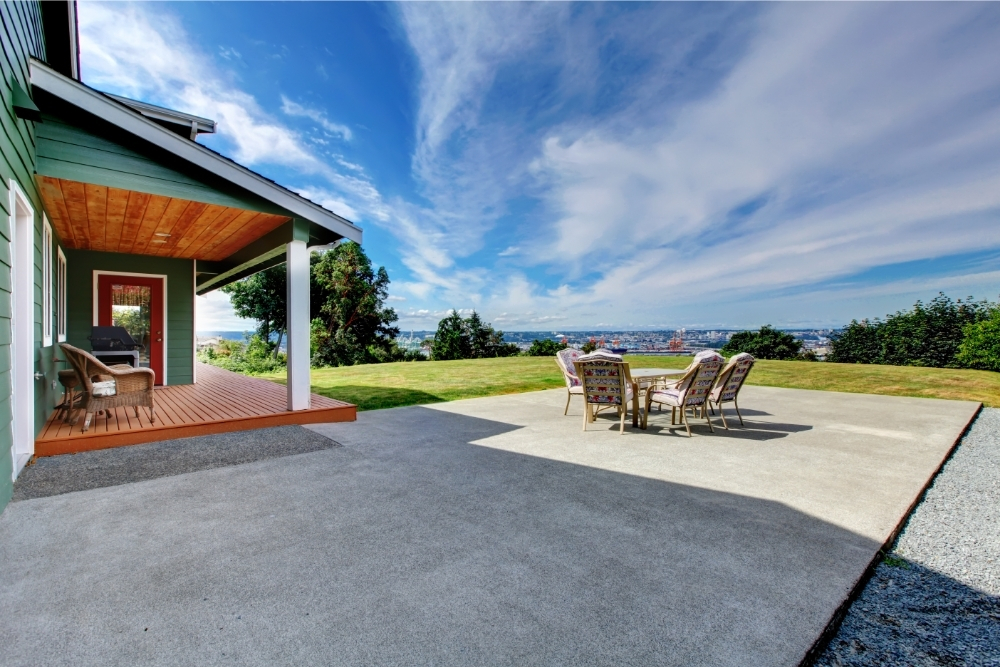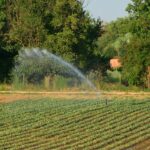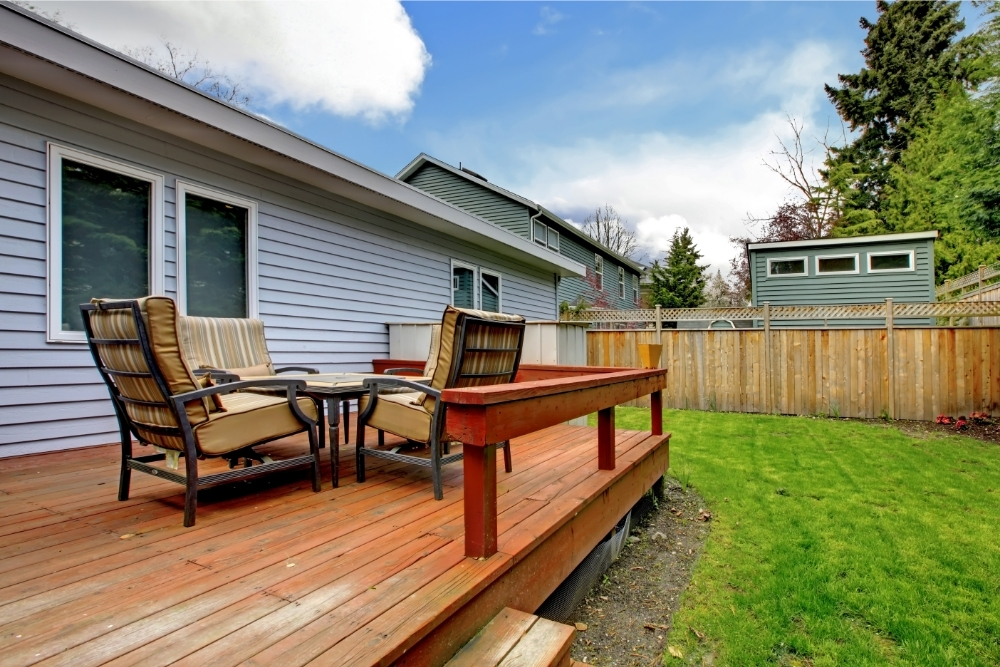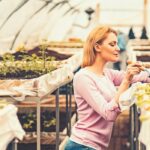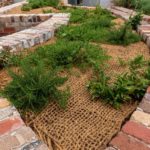Although most people see leaves as a problem in autumn, you can actually put them to good use as compost or mulch. But should you use your own leaves as mulch, or is it better to buy mulch in bags from the store or a supplier?
Leaves can be used as mulch since they enrich the soil and insulate plants. They’re also free (if you have trees), easily accessible, and aesthetically pleasing. You’ll have to shred leaves and wait for them to decompose before using them as mulch.
Let’s take a closer look at how you can make mulch from leaves as well as which leaves are best for mulching. Before you know it, you’ll be enjoying a garden that’s been freshly mulched with just the leaves from your yard!
Are Leaves Good for Mulching?
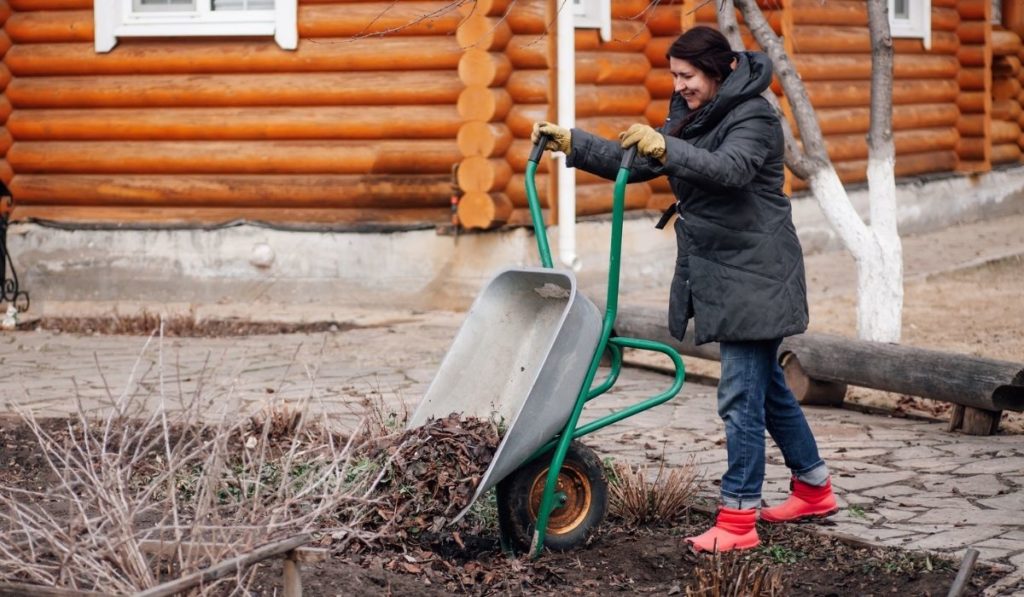
Leaves are great for mulching if used properly. They add nutrients to the soil, improve drainage by attracting earthworms and other helpful insects, and can warm the soil, keeping plants comfortable in colder weather. Leaves are also easily available and shouldn’t cost anything — at least if you have trees in your garden.
The main advantage of using leaves as mulch is that they enrich the soil with essential nutrients. Leaves decompose faster than bark, wood chips, and other organic mulch, making them perfect for improving soil quality.
Another benefit of using leaves as mulch is that they attract earthworms, which are great for the soil and plants. The earthworms play an important role in releasing the nutrients in the decomposing leaves. They also improve air circulation and soil drainage, enriching your garden over time.
If you use leaves as mulch in flower beds, in vegetable gardens, or in or around saplings, it can speed up the germination of seeds and help the young plants grow faster. Decomposing leaves warm the soil better than other types of organic mulch, so they’re great for insulating young plants in early spring and autumn.
Best of all, leaves are a free resource, and you can gather them in the fall to use as mulch in spring. Instead of buying mulch every spring, simply replenish the mulch in your garden with the leaves you’ve gathered in the autumn.
The Best Type of Leaves for Mulching
When using leaves for mulching, always look for the best leaves. Some leaves decompose too quickly and are more suitable for compost. Others take too long to decompose and may affect the soil’s drainage. So, which leaves should you use for mulching?
The best leaves for mulching are those that take a few months to decompose when shredded, such as oak leaves, beech leaves, or leaves from hornbeam trees. These leaves are easy to shred and will decompose fast enough to be used as mulch after a few months to a year.
Avoid using leaves that will decompose too quickly since these aren’t suitable for mulching, and you’ll need to replace them every few months. If you use the right type of leaves for mulching, your mulch will last at least 1-2 years. Also, avoid using leaves that retain too much water; those leaves might attract fungus and pests.
You can also mix leaves from oak or beech trees with pine needles, bark, and other natural materials to make mulch that will last longer and enrich the soil.
How to Mulch Leaves
Although you can use whole leaves as mulch, it’s best to shred them to make the perfect mulch. Whole leaves may affect the soil’s drainage and can block the sunlight from grass and other plants. Shredded leaves drain quite well and decompose faster, and they can be used to enrich and warm up the soil.
However, you can’t simply rake leaves from your yard, shred them and use them as mulch. Leaves take time to decompose, and you’ll have to wait 6-12 months before you can use them as mulch.
Follow these steps to turn leaves into mulch:
- Rake the leaves into a pile. It’ll be difficult to collect the leaves once you shred them. Once you have the leaves in a large pile, you can start shredding them. If you’re using pine needles as leaves, there’s no need to mulch them; you can use them directly as is.
- Once the leaves are in a pile, shred them with a mower or string trimmer (on Amazon). Most people prefer to use a lawnmower with a bag attached to collect the shredded leaves as it’s the fastest method of shredding the leaves. You can also use a trimmer, although it’s a little messy and will take time if you have a few bags to shred.
- If you don’t have a lawnmower that can shred leaves, use a leaf shredder (on Amazon) instead. Leaf shredders are designed to shred large amounts of leaves for compost and mulch. They can be a real time saver.
- Once the leaves are shredded, place them in the corner of your yard and water the pile regularly for about 6-12 months. You can also dig a trench in your garden and place the leaves under a layer of soil to allow them to decompose faster.
- Once the shredded leaves have decomposed fully, they’ll become dark, brown, or black and can be used as mulch. Spread a layer of 3-4 inches of mulched leaves around your garden to keep the soil warm and reduce the growth of weeds.
Even though you’ll have to wait a few months for leaves to mulch, it’s much better than throwing them away. Leaves have a high carbon content and will enrich the soil much faster than other types of organic mulch.
Tips for Mulching Leaves
Leaf mulching is a fairly simple process, but it can take time, and you may not always get consistent results. A lot depends on when and how you mulch them. Here are some tips for mulching leaves effectively:
- Try to shred the leaves finely. Finely shredded leaves will decompose faster, and you can get your mulch in a few months.
- Set your mower to mulch (if it has the option). Use this for dry or wet leaves and grass.
- Water the shredded leaves regularly to mulch them faster. Watering the leaves will also attract earthworms and other useful insects.
- Mix leaves with grass clippings to improve the nutrient balance of the mulch. You can mulch the grass and leaves together in your lawn mower.
Other Types of Mulch
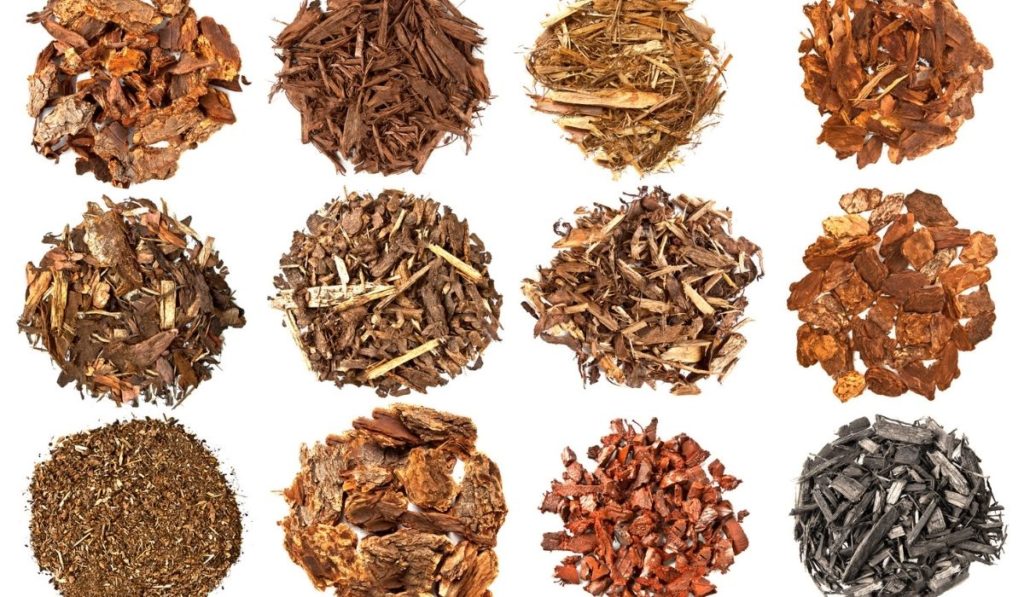
Shredded leaves are a great option to use as mulch in your garden, but you can also use other garden materials as organic mulch. Some of the most popular types of organic mulch include:
Straw and Hay
Straw (on Amazon) and hay are commonly used as mulch and can be used to insulate plants. They also decompose quickly and will enrich the soil. However, straw may sometimes affect the soil’s drainage, so use it sparingly.
Bark Mulch
Bark Mulch is one of the most commonly used organic mulches. It can last several years before needing to be replaced. It decomposes slowly, suppress weed growth, repel certain pests, and insulate the soil.
Wood Chips
While bark is more commonly used as mulch, wood chips (on Amazon) also make an effective organic mulch. They’re durable, decompose much slower than bark, and they don’t need to be replaced as often.
Grass Clippings
If you’re looking to make mulch from something that’s easily replaceable and readily available, then grass clippings are perfect. You can use grass clippings to insulate the soil and suppress weeds. Grass clippings are also high in nitrogen, making them the perfect compost as they decompose.
Synthetic Mulch
Synthetic mulches, such as rocks and rubber mulch, are also great options for insulting soil, suppressing weeds, and improving the aesthetics of your garden. However, synthetic mulch doesn’t decompose and won’t improve the garden’s soil quality.


